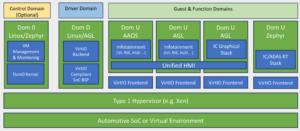Analysts from Berg Insight expect the global satellite IoT subscriber base to hit 15.7 million by 2025 after surpassing 3.4 million in 2020.
The researchers predict the number of subscribers will increase at the compound annual growth rate of 35.8 percent.
IoT devices continue to proliferate rapidly. Satellites aren’t heading into orbit at quite the same pace but launches have certainly increased in tempo as an increasing number of companies seek to secure their slice of what’s sure to be a rather delicious pie over the long-term.
“Orbcomm, Inmarsat, Iridium, and Globalstar are the largest satellite IoT network operators today,” says Johan Fagerberg, Principal Analyst at Berg Insight.
Orbcomm started its journey as a dedicated satellite operator but has since transitioned into an end-to-end provider that delivers services on its own network in addition to being a reseller partner for Inmarsat and others. The company had 1.2 million IoT subscribers across its own and Inmarsat’s satellite networks.
Iridium and Globalstar had 1.1 million and 0.4 million subscribers, respectively.
The main purpose of satellite networks is to provide connectivity in rural locations that are beyond the reach of terrestrial cellular and non-cellular networks. As such, they’re particularly useful for applications such as maritime and global asset tracking in addition to unlocking opportunities for remote communities.
Berg Insight notes an increasing number of new initiatives that have joined the incumbent satellite operators and are predominately based on low-earth orbit (LEO) nano satellite concepts.
Examples of the aforementioned projects include Astrocast, CASC/CASIC, Fleet Space Technologies, Hiber, Ingenu, Kepler Communications, Lynk, Myriota, Skylo, Swarm Technologies (SpaceX), and Totum Labs.
“While most rely on proprietary satellite connectivity technologies to support IoT devices, several are starting to leverage terrestrial wireless IoT connectivity technologies including OQ Technology, AST SpaceMobile, Omnispace, Sateliot and Galaxy Space (3GPP 4G/5G), EchoStar Mobile and Lacuna Space (LoRaWAN), and Eutelsat (Sigfox),” concludes Mr Fagerberg.
(Photo by Greg Rakozy on Unsplash)
Want to find out about digital twins from executives and thought leaders in this space? Find out more about the Digital Twin World event, taking place on 9 November 2021, which will explore augmenting business outcomes in more depth and the industries that will benefit.
Tags: asset management, asset tracking, berg insight, connectivity, globalstar, inmarsat, internet of things, IoT, iridium, networks, operators, orbcomm, remote, report, research, rural, satellites, study



